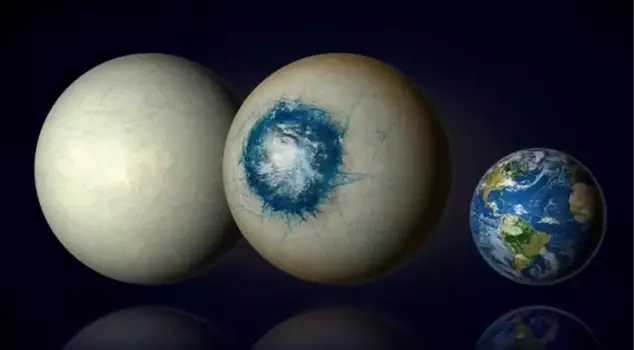
10.07.2024 15:30
Scientists have discovered LHS 1140 b, a "water world" in the habitable zone of a red dwarf star in the constellation Cetus. This planet has temperatures that could support the presence of liquid water. It is suggested that it may have a similar atmosphere and ocean to Earth. The findings indicate that the planet has a significant atmosphere and could have liquid water.
A 'water world' has been discovered in the 'habitable zone' where scientists believe there are air and liquid oceans in space. The watery 'super Earth' LHS 1140 b is located in the orbit of a red dwarf star in the Cetus constellation, about 50 light-years away. This planet is located in the habitable zone of the star, which means it is in a region that can support the presence of liquid water with temperatures that can support it.
CONDITIONS THAT CAN SUPPORT LIFE HAVE BEEN DISCOVERED
Scientists have determined that this planet may have a similar atmosphere and ocean to Earth. In an article published in The Astrophysical Journal Letters, LHS 1140 b was identified as one of the most promising candidates with conditions that can support life. Lead author Charles Cadieux said, "LHS 1140 b may be our best chance to confirm the existence of liquid water beyond our Solar System. This will be a major milestone in the search for potentially habitable exoplanets."
INTENSE ATMOSPHERIC ANALYSIS
Researchers from the University of Montreal examined data from NASA's James Webb Space Telescope. These data were added to the data from telescopes such as Spitzer and Hubble. In their analysis, the possibility of LHS 1140 being a mini-Neptune was ruled out and evidence was found that it is a super Earth. NASA Sagan Fellow Ryan MacDonald said, "LHS 1140 b is one of the best small exoplanets that can support a thick atmosphere, and we may have found evidence of an atmosphere on this planet." These findings indicate that the planet has a significant atmosphere and may have liquid water.
In addition, it was found that LHS 1140 b is less dense than expected, indicating that a large portion of its mass could be water. This suggests that LHS 1140 b is a water world and likely appears as a snowball heading towards the red dwarf. Current models suggest that LHS 1140 b could have an ocean with a diameter of about 4,000 kilometers and surface temperatures that can be as mild as 20 degrees Celsius (68 degrees Fahrenheit). MacDonald said, "The first discovery of LHS 1140 b with JWST revealed that it could be the best-known habitable zone exoplanet for atmospheric characterization. While we need more JWST observations to confirm its nitrogen-rich atmosphere and search for other gases, this is a very promising start."